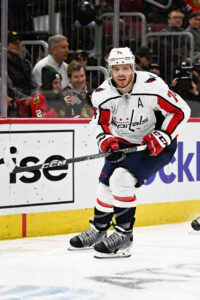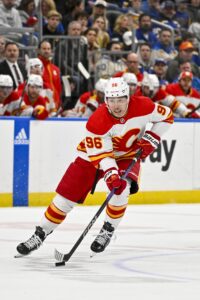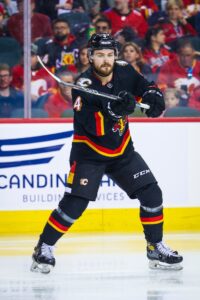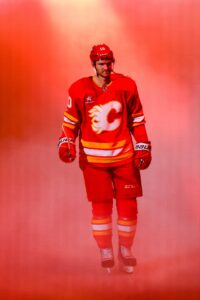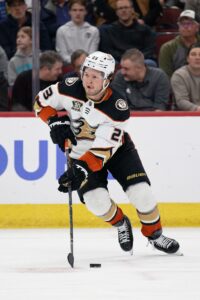Topics in this edition of the PHR Mailbag include why the time might not be right for Dallas to look into defensive help, speculating on possible trade targets for Tampa Bay, and much more. If your question doesn’t appear here, watch for it in next weekend’s mailbag.
PyramidHeadcrab: With Columbus potentially looking to take on a big contract and San Jose actively improving by adding some talented misfits from other teams, who are some players you could see bound for each team as the season progresses?
And if Columbus does take on a big contract, do you think it will be another team paying to unload an overpayment contract, or a team like the Leafs offloading a decent contract as a result of their cap crunch?
I think Columbus is open to both options, as long as the contract they take on is a short-term one (see Dante Fabbro). Knowing that they’ve typically been more of a budget team, they’re probably not going to want to spend some of their financial capital on a long-term pickup whose primary purpose is to add a draft pick or two. But something for a year or two could be manageable.
In terms of who that could be, one of the names that comes to mind is Oliver Bjorkstrand who was healthy scratched recently. Moved to Seattle as a cap-clearing move originally, he’s someone who should be comfortable in the market and it wouldn’t shock me if the Kraken try to move out a pricey contract to give themselves some cap flexibility as they’re really tight when everyone’s healthy. I could see them being open to taking the final years of Ryan Ellis’ LTIR contract if Philadelphia wants to bank more cap space (or Ryan Johansen wins his grievance later on and gets at least part of his deal back on the books). With that deal being insured, the actual cost outlay would be minimal in that sense.
I suspect they’d be open to taking a more reasonable deal off a cap-strapped team like Toronto but the Maple Leafs will be looking to move those pieces for some value while the Blue Jackets are probably looking to get a player plus a sweetener for taking a contract on. With that in mind, I’m not sure that lines up at this point trade-wise for those teams.
Frankly, there aren’t a ton of pricey contracts out there that fit the bill. When I wrote the piece about them last weekend talking about their willingness to do this, I didn’t bother getting into speculation as I don’t see a lot of fits for them. Unless they’re willing to take on a longer-term agreement, I don’t necessarily see them accomplishing this in the coming months.
I don’t see the Sharks actively trying to add any other veteran players for a while. They’re also a budget team and right now, they’re going to want to see how some of their younger pieces fare. If some of them falter too much, then perhaps they look to see if there’s a rental veteran to bridge the gap but there are a lot of rental veterans out there. At the trade deadline, perhaps they take on an expiring contract from a team that needs to move money to make a bigger splash but again, that could be a lot of players. If another Timothy Liljegren-type trade comes around where they can get a mid-20s player with some control for a low cost, that might be their preferred route. Before the season, I’d have said someone like Kaapo Kakko who was in trade speculation but that’s probably not an option at the moment.
vincent k. mcmahon: With the recent injury to Broberg and Leddy still out, do the Blues call up another d-man if they can or do they hold out until Leddy returns? Also, do you think this might cause an issue with the chemistry of the d-pairings?
I’m a little surprised St. Louis hasn’t brought up a blueliner at this point, to be honest. They’re already into LTIR so there isn’t a cap-related element to them electing not to do so. Tyler Tucker is quite familiar with the systems already and would be a safe option to have as a seventh/reserve option while Corey Schueneman has experience in that role as well with Montreal and Colorado (to a lesser extent). One of them easily could be up as insurance.
I wouldn’t be too worried about the chemistry of the defense pairings. When Nick Leddy returns – which should be relatively soon – he will go back into the lineup and play a prominent role, deservedly so. There will be injuries throughout the year or players struggling that will necessitate changes so it’s unlikely the defense pairings will stay together for any sort of extended stretch over the course of the season.
That’s a league-wide observation too, not a Blues-specific one. Even teams with a proven defensive group will mix things up from time to time as you never know when you might be forced into making a change when injuries strike so St. Louis, a team whose back end is much less secure, shouldn’t have any concerns about needing to mix up their pairings.
bottlesup: Dallas making any calls on defenders? Fowler, Provorov, or even maybe Arber Xhekaj? Which would require the most in return then the one that would require the least?
I’m sure they’re making calls on defensemen but I doubt they’re seriously pursuing any at this time. At the moment, per PuckPedia, Dallas can only add someone making around $1.7MM. If their roster remains relatively unchanged, they could have the ability to add someone making more than $6MM. Those are two very different pools to shop in. In the first price range, maybe there’s a third-pairing upgrade. That’s useful but doesn’t move the needle too much. But at the deadline, being able to pick up $6MM opens up a lot more options, especially at a time when more teams are open to retaining salary.
I don’t see Cam Fowler being a viable option for the Stars solely because of the extra year on his contract. Dallas can’t afford a $6.5MM player on the books for next season when Jake Oettinger’s big raise kicks in while Wyatt Johnston and Jamie Benn are among their free agents. Unless Anaheim paid down half the contract (which would probably up the asking price to a first-round pick and then some), it’s probably not a great fit.
I don’t mind the Ivan Provorov option though. While he’s a left-shot defender, he’s playing on the right in Columbus and that’s the side the Stars need an upgrade on. Could he go in and cover 20-plus minutes a night and kill penalties? I think so and that’s the type of player they need to take some pressure off the top options. The Blue Jackets will likely be seeking a first-round pick and something else but should be willing to pay down half of their portion of his contract ($4.725MM) which should give them a long list of suitors.
Xhekaj is an odd fit. He’s also a left-shot blueliner and hasn’t fared great when moved to his off-side. He’s certainly cheaper ($1.3MM through next season) and has more club control but at most, he might crack the third pairing. He’s also a hard player to peg value-wise. I think there are teams who don’t view him as an NHL player and others who would pay a fairly high price tag given his physicality and a decent track record of offense at the lower levels. It probably doesn’t get to the level of Provorov’s likely price tag but I don’t feel he’s the type of blueliner they should be going after.
mikeyziggy: With the latest update on Landeskog it certainly sounds like if it doesn’t happen this season it doesn’t happen at all. What team is going to take on his contract to free the Avs from the cap hit in the event he can’t play? That $7mil could go a long way in helping fix some of the problems up front.
For those who didn’t see the news earlier this week, the latest update on Gabriel Landeskog certainly wasn’t an ideal one. Head coach Jared Bednar indicated that Landeskog had a setback as he continues to try to work his way back from a knee injury that has kept him out for the last couple of years. However, Landeskog is still hoping to suit up at some point this season which doesn’t help the Avalanche in terms of the cap as they can’t spend that money on other players if they think he’s going to play before the playoffs begin.
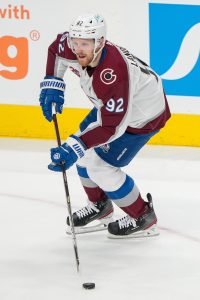 Let’s use the scenario that says he can’t come back. Frankly, that feels more and more like the probable scenario. The Avs don’t necessarily have to trade him as they can just put him on LTIR and spend up to $7MM over the cap on their roster. (It’s not quite that simplistic and involves optimal timing of placements and whatnot but that’s the gist of it.) That’s not an ideal scenario to be in as it prevents them from banking in-season space and means any bonuses earned get charged the following season but it’s not as if that $7MM is unusable.
Let’s use the scenario that says he can’t come back. Frankly, that feels more and more like the probable scenario. The Avs don’t necessarily have to trade him as they can just put him on LTIR and spend up to $7MM over the cap on their roster. (It’s not quite that simplistic and involves optimal timing of placements and whatnot but that’s the gist of it.) That’s not an ideal scenario to be in as it prevents them from banking in-season space and means any bonuses earned get charged the following season but it’s not as if that $7MM is unusable.
But the other option of trading the contract probably isn’t a great one either. Landeskog still has four years left on his contract after this one. That’s a long time for a team to willingly carry a permanent LTIR deal and the one team that was willing to do so (Arizona) is now in Utah with an owner willing to spend so they won’t be doing that anymore. Is there a team that knows they’re going to be well below the cap through at least the 2028-29 season so that taking on Landeskog’s contract is a low-risk proposition? I’m not sure there is, to be honest. Maybe when there are two years left it’s an option but I don’t see the Avs shedding that deal anytime soon if his playing days are numbered.
FeeltheThunder: In Tampa, Nick Paul was on the second line with Hagel and Cirelli, the line was very successful at controlling puck possession at 5-on-5 and was one of the most dominant lines in the NHL over the first couple of games of the season. However, since Paul was put back on the third line at center, his possession numbers at 5-on-5 are starting to look like last year. Over the two-game span against the Wild and the Jets, Paul had an 18.58 on-ice expected goals for percentage share (xGF%) at 5-on-5, ranked lowest on the roster. Furthermore, his 33.62 on-ice shots for percentage (SF%) ranked last on the team. In other words, with Paul on the ice, the Lightning gave up two shots for one they produced. As management starts to think about in-season acquisitions, a third-line scoring forward should be at the top of the list for Tampa especially since Mikey Eyssimont isn’t producing (he’s a better fourth line guy) though Mitchell Chaffee is playing solid; who would you think be some valid options for that third line to help Paul and Chaffee?
I wouldn’t be too concerned about a rough couple of games on a different trio (though admittedly, things didn’t get much better in their last outing). When you’re shifting to a different role on a different line at a different position, you get a bit of leeway. That said, there needs to be improvement on that front relatively soon.
As for potential pickups, I think Tampa Bay would prefer to shop on the rental market given that they already have nearly $82MM on the books for next season, per PuckPedia. I suspect GM Julien BriseBois would like to leave himself some flexibility to try to make a splash again next summer so a one-and-done acquisition would help make that happen. With that in mind, I’ll limit my picks here to the rental market.
The first name that comes to mind isn’t necessarily a scorer. I could see Luke Kunin making sense for them. He could plausibly play the role Paul has now, allowing Paul to move back to the second line. Kunin also plays with an edge physically, an element they lost when they moved Tanner Jeannot to Los Angeles over the summer. Assuming they don’t have too many injuries between now and the deadline, the Lightning should be able to absorb his $2.75MM AAV in full as the Sharks don’t have any retention slots remaining. If they have ample cap space, perhaps they aim higher in San Jose and try for Mikael Granlund ($5MM) which would add some offensive upside to the bottom six and again, probably allow Paul to move up.
As for other options, if Nashville can’t get out of its tailspin and winds up selling, Gustav Nyquist would add some pop on the wing if the plan is to keep Paul down the middle. If Buffalo finds itself selling again, Jordan Greenway would add some size and scoring potential on that trio as well. Meanwhile, if they want to pivot the third line into more of an outright checking line, someone like Joel Armia could be a low-cost flyer with some playoff experience.
@SakariL89761: When teams ’paper’ down players to the AHL or ’bank’ cap space, does it affect the players financially and if so, can the union stop it in the next CBA?
If the player is on a two-way contract, yes, it affects them financially as they’d receive their AHL salary for the day over their NHL salary, a difference of several thousand dollars. If they’re on a one-way deal, the player actually saves a bit of money as there is no escrow taken off when the player is in the minors.
I’m not sure there’s a great way to stop it. Frankly, I’m not certain the NHLPA would necessarily want to stop it. If you put a cap on the number of assignments to the minors (like MLB did to try to cut down on the roster churning for optionable pitchers a couple of years ago), you could wind up taking away opportunities from deserving players later in the year if they’re ‘out of options’ so to speak as a team won’t want to call up a player they can’t send down anymore.
Meanwhile, some of the opportunities created for the players on the fringes of the roster are because teams can do the paper transactions. In essence, their final roster spot only costs part of the $775K minimum salary. But if you can’t shuffle the players, how many of those teams just won’t bother to carry the extra body? (Or how many might not be able to afford it?) Now you might be taking away opportunities for players in the minors, even if they’re only on the NHL roster part-time.
In a cap system that’s pretty restrictive, I can’t see there being any desire from teams to put any restrictions on this and with the NHLPA likely realizing that changing the system will negatively affect some members as well, I can’t see it being a high-priority item for them in CBA talks when they potentially get underway next year.


